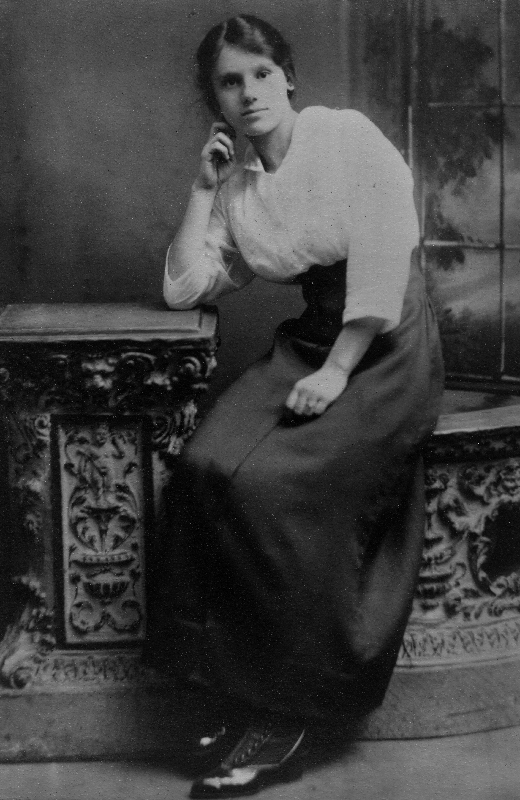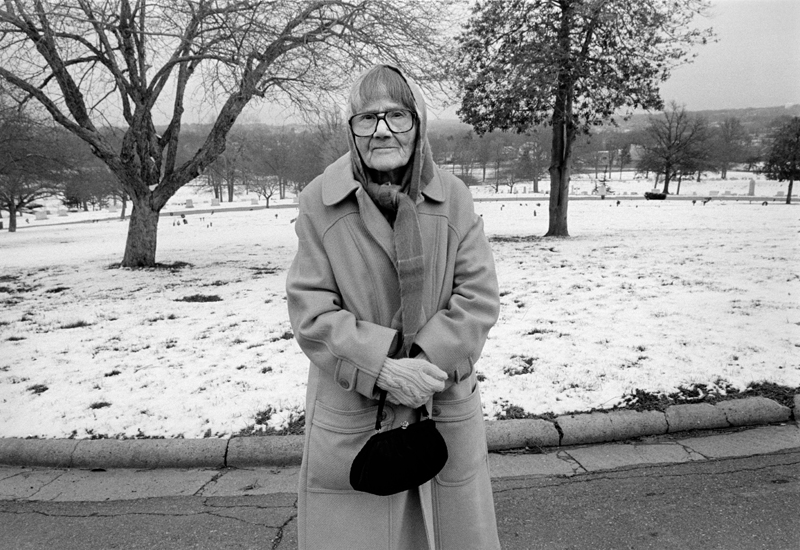Today would have been my mother's 97th birthday. Wishing you a Happy Birthday, Mom, from your first born. Love you and Miss you.
My Mom at Eighteen
Catherine Galeano Amberg, Washington, DC, 1939
Catherine Galeano Amberg, Washington, DC, 1939
Today would have been my mother's 97th birthday. Wishing you a Happy Birthday, Mom, from your first born. Love you and Miss you.
Belva Wallin Cutshall, Marshall Bypass, Madison County, NC 1979
Last week after posting the image of my mother from 1942, there was a comment from a woman named Lana Robinson. I didn't know her, but have noticed over the last couple of years that she is a regular reader of my blog posts. In her comment she mentioned she was the baby in her family and her mother was Belva. I've only known one person in my life with the name Belva and that was Belva Cutshall, who was the daughter of Berzilla Wallin, one of my favorite Madison County people.
Lana moved to Nashville, Tennessee, in 1971, which explains why I never met her since I didn't move here until 1973. She thought we had maybe met at Berzilla's or her mother's funerals, but I have no memory of it.
In 1979, I was working on a Photo Survey grant from the National Endowment for the Arts. The idea was to do a year-long look at the county and present the work in an exhibit at Mars Hill College. The entire project is now housed at the National Portrait Gallery at the Smithsonian Institution in Washington, DC.
I didn't know Belva well. We would see each other at family decorations, or events where her mother and brother, Doug Wallin, were singing. But my memory of her is formed by this photograph I made at the Marshall Bypass in 1979 as part of the grant - genuine, easy to be around, direct and colorful.
Photography has opened many doors for me. It has taken me places I wouldn't dream of going and introduced me to amazing people I never would have met otherwise. So, it fascinates me that forty-two years after meeting Berzilla, who was eighty-three when I met her, I find out her granddaughter, who I don't know, reads my blog. I think this speaks to how communication has changed during that time period; the technology has changed us. But also, I think it shows us how photography provides us with not only memories of our shared and personal pasts, but also offers opportunities to engage in the future.
Dad and Me, Washington, DC, 1948
My Dad loved his Desotos.
I think this is his first one.
I was his first child. A son.
I would've been a year old in this picture.
He would've been 30.
People called him "Bud." His name was Robert.
He was a good guy, a better than good father.
I couldn't have asked for more.
I know this from my face - secure, ecstatic, bright-eyed.
He has a concerned look.
Why? I wonder.

My Grandmother, Jennie Lozupone, ca. 1915
Today would have been my Grandmother’s 114th birthday. She died in 1995. I was asked to give the eulogy at her funeral, which I’ve reprinted in this post. Rereading the eighteen-year-old text, I understand how much I’ve learned in the ensuing years from a series of great editors and teachers. I’m resisting the urge to correct grammar, syntax, and sentence structure within the text. There are also some factual errors that I’ve corrected at the end of the post.
5/30/95
So, what’s in a name? The woman we are honoring and saying goodbye to today was known by many names. Jennie Lozupone. Mrs. Galeano. Aunt Jennie. Mama. Gram.
Her life spanned the length of the 2oth Century and encompassed many of the great events of this county’s history during the Century. But as we know, history is more than great events. History is also the past and the past is both personal and intimate.
Jennie Lozupone was born in 1899 in Bari, Italy. She arrived in the United States in 1907, part of the great Italian migration. She landed at Ellis Island and her family first settled in Albany, New York, before moving to Washington, DC, where she lived her entire life.
In 1916, she married Joseph Galeano, a fellow immigrant, he from Sicily. They bought a home on Morse Street in Northeast Washington. It was there they had their four children – Vincent, Louis, Catherine, and Charles.
When the Great Depression struck this country in 1929 Jennie joined the workforce to help support her family. She began a career as a seamstress with the late Jimmy Bello. While her clients included President Franklin Delano Roosevelt and the Supreme Court Justices, she was most proud of the First Communion dresses, the dance recital outfits and the Easter clothes she made for her nieces and grandchildren. She was always there to hem a pair of pants or sew on a button.
Two of her sons served in the Armed Forces during World War II. She suffered the insecurity of not knowing her baby son’s whereabouts for two years during that conflict.
After the war, as the middle class in this country grew, her family became part of that movement. She and Joe bought a house in suburban Maryland on University Blvd. Gram always accepted what life had to offer her – sometimes with resignation, but more often with grace and a willingness to make the best of any situation. Her husband Joe died unexpectedly in 1948 and it was then the second half of Jennie’s life began.
Gram loved life. She loved food – not jus the cooking and eating of it, but she loved to feed others. Her lasagna and eggplant are famous across the country given the travels of her children and grandchildren. She loved to gamble – bingo, horse races, poker. She loved to win, but really she was a safe bettor. Mostly, she loved the Fellowship that the gambling provided.
Gram understood the value of money. I remember a story of her getting held up at knife-point by a young boy whose situation was even worse than hers. She said she looked him in the eye and said, “You’re not getting my hard earned money” and started swinging her oversized purse at him. She was a giving and generous woman who understood that by giving she would receive.
As she got older and her eyesight worsened, she switched from sewing to knitting afghans although she never could get the name right, calling them Africans until the end. Hundreds of Africans that now reside all over the country. She made them for weddings, births and graduations – or simply because she liked you. Every Christmas and birthday each of her children, grandchildren, great-grandchildren, and great-great grandchildren received a savings bond.
When she was 67 years old she made the first of seven trips back to Italy to visit her late husband’s relatives in Sicily, often taking one or more of her grandchildren with her. She loved those trips – talking the language again, the food, the attention.
She was devoted to St. Camillus Church and was an active member of the Leisure Club. She put her sewing skills to use for the Church and often made Baptismal bibs for the newborn and did laundry for the parish priests.
Gram represented a sense of security and safety for all of us. She has been with us all our lives. Not just the literal security of a home, a meal, clothing or help when we needed it, but also a symbolic security of a safer place, a safer time.
So, what’s in a name? I can’t help but wonder if this Jennie Lozupone, this Mrs. Galeano, this Aunt Jennie, this Mama, this Gram had any idea she would be so blessed in her life. That she would leave such a wonderful legacy – four children thirteen grandchildren, 37 great-grandchildren with two more on the way and seven great-great grandchildren.
The last few years she had forgotten most of our names although she still delighted in our company, especially the young children. She seemed to become more of a child herself. The last time I saw her was last November. She let me feed her her supper and carried on a long conversation with me – in Italian. As she finished her meal I struggled with my Latin and Spanish to ask her if she was done eating. “Fini?” I asked. She looked me in the eye, always the teacher, and answered, “Finito.”

Jennie Lozupone Galeano, 1992
Appendix
My grandmother and her family lived in Gioia dei Colle, Italy, which is a small village just west of Bari. Gioia dei Colle means Joy of the Hill – if there could be a more perfect name for a town I haven’t heard it.
I’ve listed Gram’s birth year as 1899, which would have made her 95 when she died. After her death, we discovered a document that indicated she was actually born in 1897.
The number of great-grandchildren and great-great grandchildren has mushroomed since 1995 to a point where I can no longer keep up.
I think about my grandfather a lot even though I never really knew the man. Joe Galeano from Sicily. I have this one picture of the two of us together, taken on the front stoop of the house in the Maryland suburbs he and my grandmother had just bought. The house was not only an improvement in their living space, but a symbol of upward mobility for these southern Italian immigrants.
He worked for my grandmother’s brothers who did stuccdatore – ornamental plastering – and they had contracts to work on new government buildings in downtown Washington. My grandmother was a gifted seamstress who made suits for Franklin Roosevelt and robes for the Supreme Court Justices. Her boss, Jimmy Bello, ran numbers out of the tailor shop.
My grandfather died from Rocky Mountain spotted fever he’d contracted from a tick bite. It was late July, 1948; two or three months after the photograph was made. I was his first grandson, the only one he ever knew, and I love how the photograph communicates protectiveness and pride through his gesture and pose.
I’ve read that a tick can live twenty years waiting for a warm-blooded host and that one in a thousand carry the infection. That means this particular lethal tick could have hatched when my grandfather was in his thirties - working with his in-laws, raising his children, moving out of the city to the suburbs, and sending money back to the old country.
His family had been in Sicily forever, through centuries of invasions, poverty, and lack of opportunity. It’s why he and his brother, and millions like them, left - never again seeing their families or homelands. In my grandfather’s case, just as he was experiencing success, represented by a new home and new grandson, he convulsed for four days and died. He was buried in Arlington Cemetery in a land he had only known for thirty-five short years, barely enough time to know a place.
